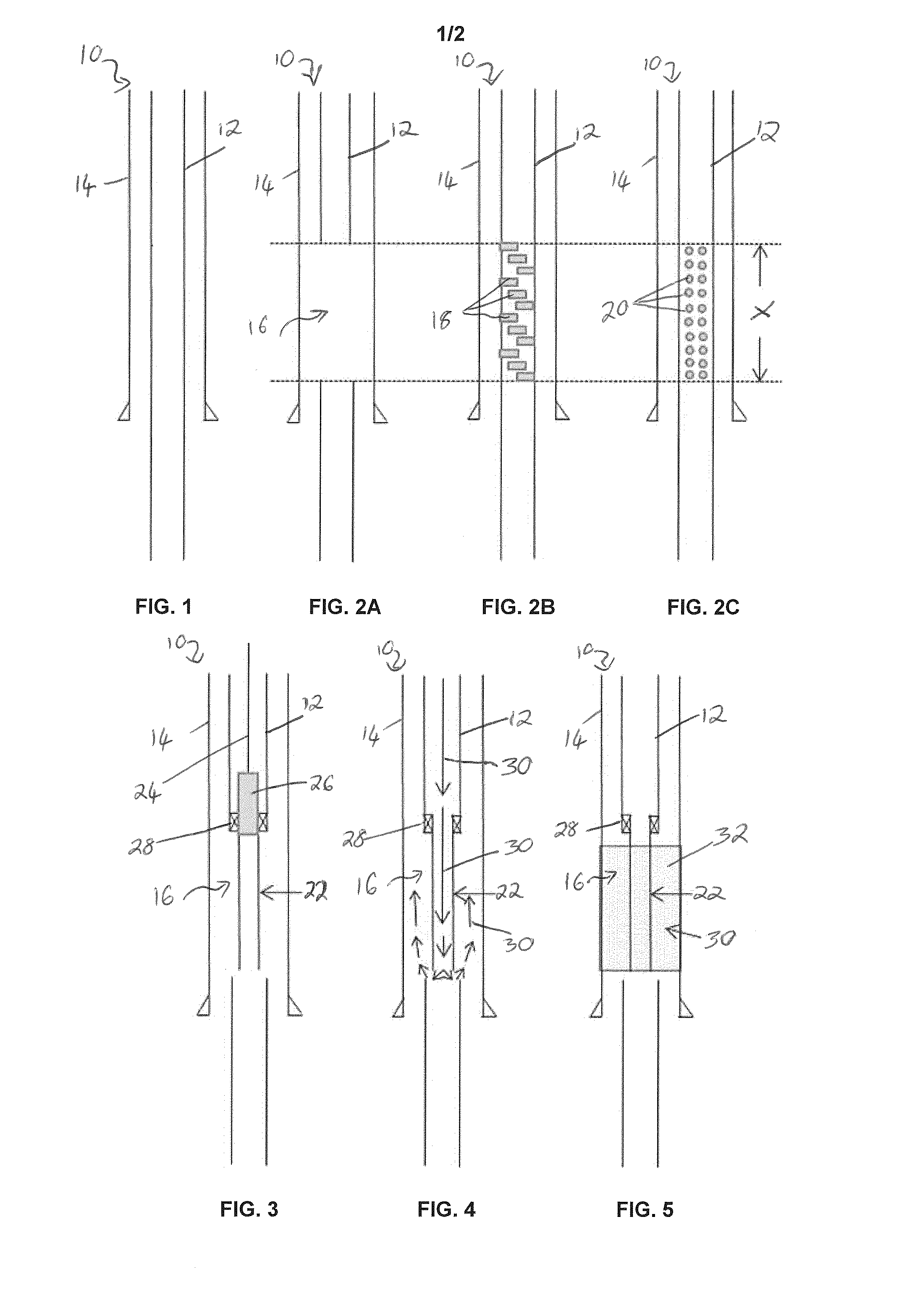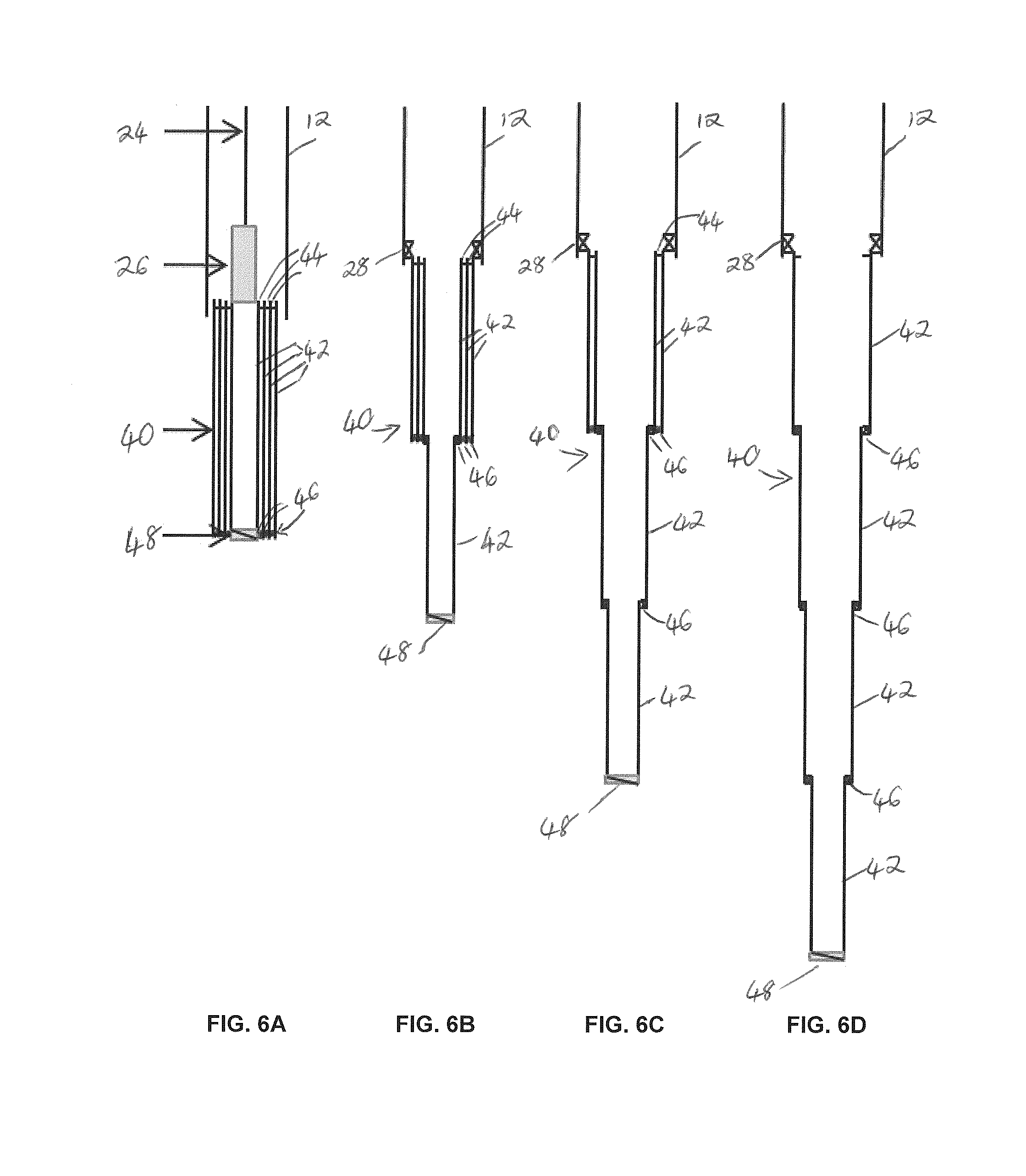Method of sealing a well
a well and well sealing technology, applied in the direction of drilling casings, drilling pipes, borehole/well accessories, etc., can solve the problems of associated safety risks, costly and time-consuming tubing removal exercise, etc., and achieve the effect of high viscosity
- Summary
- Abstract
- Description
- Claims
- Application Information
AI Technical Summary
Benefits of technology
Problems solved by technology
Method used
Image
Examples
Embodiment Construction
[0036]FIGS. 1 to 5 illustrate various methods for sealing a well in accordance with embodiments of the present invention.
[0037]As shown in FIG. 1, a wellbore 10 is provided with a production tubing 12 extending through a casing 14 to form a so-called A-annulus there-between. One or more openings is created in the tubing 12, in a location X for a well seal, as illustrated in the alternative FIGS. 2A, 2B and 2C.
[0038]FIG. 2A illustrates the case where a relatively large section of the tubing 12 has been removed to create a single opening 16 extending over the entire location X for the well seal, in accordance with one embodiment of the invention.
[0039]FIG. 2B illustrates the case where a plurality of openings 18 have been sliced in the tubing 12, in the location X for the well seal, in accordance with another embodiment of the invention.
[0040]FIG. 2C illustrates the case where a plurality of openings 20 have been perforated or punched in the tubing 12, in the location X for the well s...
PUM
 Login to View More
Login to View More Abstract
Description
Claims
Application Information
 Login to View More
Login to View More - R&D
- Intellectual Property
- Life Sciences
- Materials
- Tech Scout
- Unparalleled Data Quality
- Higher Quality Content
- 60% Fewer Hallucinations
Browse by: Latest US Patents, China's latest patents, Technical Efficacy Thesaurus, Application Domain, Technology Topic, Popular Technical Reports.
© 2025 PatSnap. All rights reserved.Legal|Privacy policy|Modern Slavery Act Transparency Statement|Sitemap|About US| Contact US: help@patsnap.com



